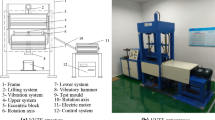Abstract
Structural properties such as flexural moduli and strength have been measured for a range of porous alumina specimens of different initial powder sizes and final porosities, sintered using the capsule-free hot isostatic pressing method. This processing method produces a porous body in which the closed porosity is negligible. The relationship of these structural properties to total porosity has been investigated. The results indicate that both a power and an exponential function could adequately describe the porosity dependence of flexural strength. The strength values obtained were test method dependent, and were significantly lower for specimens with sintering aids. A power law model based on a critical porosity, as proposed by Phani, gave the best fit for the modulus measurement data. No dependence of mechanical properties on particle size was observed. The strength measurement results did not appear to support suggestions that better strength could be obtained by the capsule-free hot isostatic pressing method than conventional sintering, as reported elsewhere.
Similar content being viewed by others
References
Y. B. P. Kwan, PhD thesis, Cranfield University, 1996.
K. Ishizaki and M. Nanko, Journal of Porous Material 1 (1995) 19.
A. S. Wagh, R. B. Poeppel and J. P. Singh, Journal of Material Science 26 (1991) 3862.
J. W. Lemmens, “Dynamic Measurements in Materials,” (American Society for Testing and Materials, Philadelphia, 1990).
W. R. Davis, Transactions of the British Ceramics Society 67 (1968) 515.
ASTM C 1198-91, ASTM Standards Vol. 15.01, (American Society for Testing and Materials, Philadelphia, 1991).
JIS R 1602-1986 (Japan Standards Association, Tokyo).
A. Wolfenden, K. Heritage and F. Clayton, Review of Scientific Instruments 59 (1988).
R. J. Allison and J. Boutin, Deformation of Sediments and Sedimentary Rocks, Geological Society Special Publication 29 (1987) 63.
D. J. Godfrey, British Ceramic Proceedings 39 (1987) 133.
S. M. Favier, MSc thesis, Cranfield Institute of Technology, 1990.
J. H. Shaw, S. M. Best and W. Bonfield, Journal of Materials Science Letters 14 (1995) 1055.
K. K. Phani and S. K. Niyogi, ibid. 6 (1987) 511.
W. Duckworth, Journal of American Ceramic Society 36 (1953) 68.
R. M. Spriggs, ibid. 44 (1961) 628.
A. S. Wagh, POEPPEL and R. B. Singh J. P., Journal of Material Science, 28 (1993) 3589.
R. W. Rice, Materials Science and Engineering, A112 (1989) 215.
R. Morrell, “Handbook of Properties of Technical and Engineering Ceramics,” 1st ed. (HMSO, London, 1987).
A. Takata, K. Ishizaki, Y. Kondo and T. Shioura , Materials Research Society Symposium Proceedings 251 (1992).
Author information
Authors and Affiliations
Rights and permissions
About this article
Cite this article
Kwan, Y.B.P., Stephenson, D.J. & Alcock, J.R. The porosity dependence of flexural modulus and strength for capsule-free hot isostatically pressed porous alumina. Journal of Materials Science 35, 1205–1211 (2000). https://doi.org/10.1023/A:1004792605528
Issue Date:
DOI: https://doi.org/10.1023/A:1004792605528




